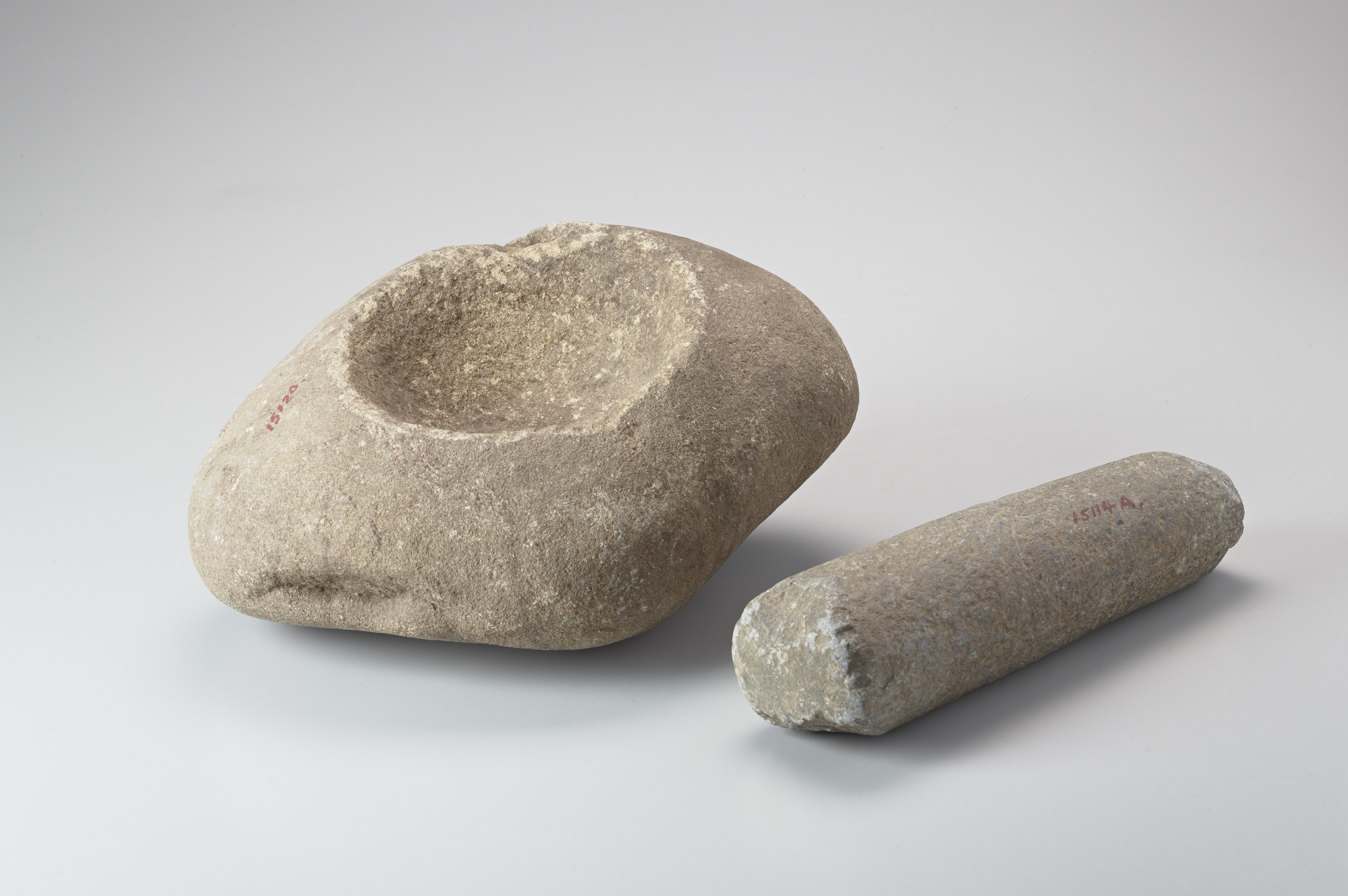Cantor Arts Center
328 Lomita Drive at Museum Way
Stanford, CA 94305-5060
Phone: 650-723-4177

Artist unknown (U.S.A.) Ohlone Mortar and Pestle, n.d. Courtesy of the Stanford University Archaeology Collections of the Stanford Archaeology Center, Stanford University
Stanford University Archaeology Collections
Leland Stanford Jr. was captivated by ancient cultures of Europe and Africa, but he grounded his museum—literally—in the local. A photograph of his nascent collection shows bowl-like mortars and long pestles arranged on a floor. Used to grind everything from spices and nuts to medicines and meat, the mortar and pestle was part of the essential tool kit for many cultures, including the Muwekma Ohlone who originally inhabited the Bay Area and continue to live here today. Jane Stanford took pains to attribute the discovery of these artifacts to her son, writing on a surviving label: “[A]ll these Pestles and Mortars [were] collected by Leland Stanford [Jr. him]self. They were all plowed [an]d dug up on the Palo [Alto] Ranch.” From the boy’s tutor, we know the child “would scour the farm” and “spend the day in the fields among the laborers” collecting what ancestral Ohlone women left behind, such as this stone set made between 6000 BCE and 1800 CE. Because stone tools were heavy to carry, they often were cached at seasonal sites to await the community’s return—or, in this case, to be uncovered centuries later by laborers and an acquisitive boy.
Christina J. Hodge and Megan Rhodes Victor